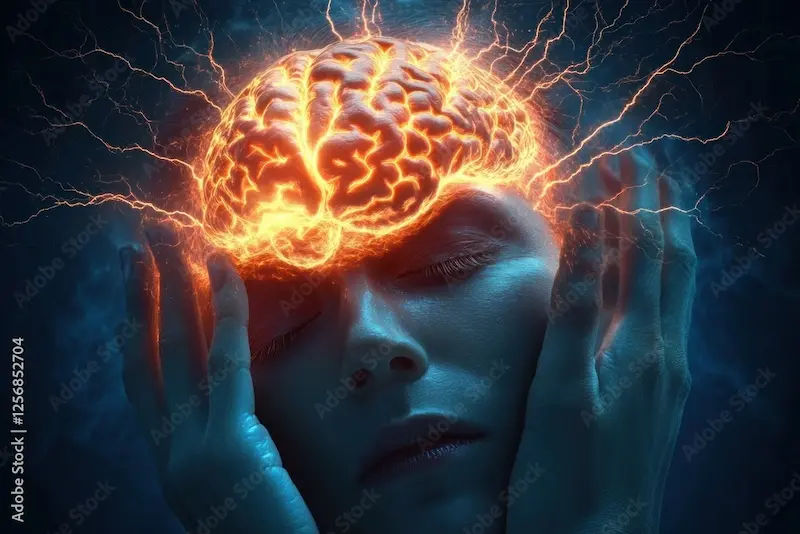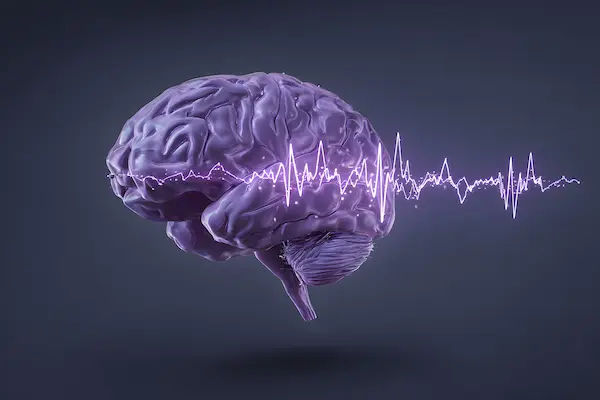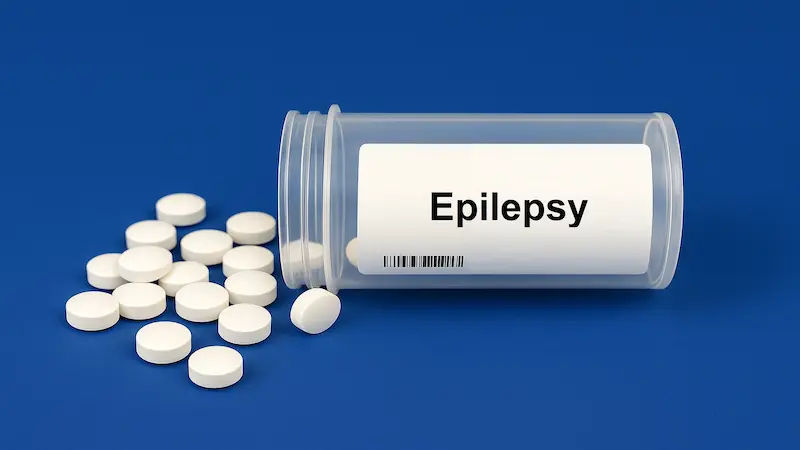What Leads To Epilepsy Diagnosis Management
Learn about epilepsy, its symptoms, diagnosis, treatment options, and strategies for effective long-term management.

Written by Dr. M L Ezhilarasan
Reviewed by Dr. Shaik Abdul Kalam MD (Physician)
Last updated on 9th Oct, 2025

Introduction
Receiving an epilepsy diagnosis can feel overwhelming, filled with uncertainty and questions. But understanding the condition is the first powerful step toward managing it effectively. Epilepsy is not a single disease but a spectrum neurological disorder characterised by a tendency to have recurrent, unprovoked seizures. These seizures are the result of sudden, brief surges of electrical activity in the brain. This article will guide you through the entire journey, from recognising the initial signs and navigating the diagnosis process to exploring the wide range of management strategies available today. Our goal is to empower you or your loved one with knowledge, demystify the process, and highlight that with the right approach, most people with epilepsy can lead full, active lives. We'll cover everything from common symptoms and advanced diagnostic tests to medication, lifestyle adjustments, and the latest innovations in care.
What is Epilepsy? More Than Just Seizures
Many people mistakenly believe epilepsy is always characterised by dramatic convulsions. In reality, seizure symptoms are incredibly diverse. Epilepsy is defined by having at least two unprovoked seizures occurring more than 24 hours apart, or one unprovoked seizure with a high likelihood of more. A seizure can be as subtle as a brief lapse in attention, a strange smell or taste, or a period of staring blankly. The key is the recurrence of these episodes due to underlying abnormal brain activity. It's a common condition, affecting nearly 50 million people worldwide. Understanding that epilepsy is a manageable health condition, rather than a limiting label, is crucial for positive long-term outcomes. The focus of modern care is not just on stopping seizures but on ensuring overall well-being.
Recognising the Signs: The Path to an Epilepsy Diagnosis
The journey often begins with recognising unusual episodes. Not every seizure means a person has epilepsy; fevers, head injuries, or low blood sugar can cause isolated seizures. The diagnosis of epilepsy hinges on the pattern of recurrence.
Common Types of Seizures and Their Symptoms
Seizures are classified based on where they start in the brain.
Focal Onset Seizures: A Localised Electrical Storm
These seizures begin in one specific area of one hemisphere of the brain. Symptoms depend entirely on the affected region.
- Without impaired awareness: A person may experience sudden emotions (like joy or fear), jerking in one limb, or sensory changes (tingling, dizziness, seeing flashes of light). They remain conscious and aware.
- With impaired awareness: Often involves a blank stare, repetitive movements like lip-smacking or fumbling, and a lack of response. The person may not remember the episode.
Generalised Onset Seizures: A Widespread Brain Event
These involve both sides of the brain from the outset.
- Absence seizures: Often seen in children, these appear as brief lapses of awareness, like staring into space.
- Tonic-clonic seizures: The most recognised type. The body stiffens (tonic phase) followed by jerking movements (clonic
phase). Loss of consciousness and sometimes loss of bladder control can occur.
Unique Insight: Many people experience a "warning sensation" or "aura" before a seizure, which is actually a simple focal seizure itself. Documenting these auras can provide valuable clues for your neurologist about the seizure's origin point in the brain.
Consult a Neurologist for the best advice
The Diagnostic Journey: How is Epilepsy Confirmed?
Accurate diagnosis is the cornerstone of effective management. It's a detective-like process that involves piecing together information from various sources.
The Crucial First Step: Your Medical History and Symptom Diary
The most important tool is a detailed description of the events. A doctor will ask what happened before, during, and after the episode. If you can, maintaining a detailed seizure diary noting the time, duration, potential triggers (like lack of sleep or stress), and symptoms is invaluable. Witness accounts are also extremely helpful.
Key Diagnostic Tests for Epilepsy
These tests help confirm the diagnosis and identify the cause.
The Electroencephalogram (EEG): Tracking Brain Waves
An EEG is a painless test that records the brain's electrical activity through electrodes placed on the scalp. It can detect abnormal patterns that suggest epilepsy. Sometimes, a longer video-EEG monitoring session in a hospital is needed to capture a seizure event, which provides definitive information.
Neuroimaging: MRI and CT Scans for a Closer Look
Brain scans like MRI (Magnetic Resonance Imaging) can identify structural causes for seizures, such as scars, tumours, or malformations. A high-resolution MRI is the gold standard for investigating the causes of epilepsy in adults.
Creating Your Management Plan: A Multifaceted Approach
The primary goal of epilepsy management is to achieve seizure freedom with minimal side effects. This is almost always a collaborative process between you and your neurologist.
Anti-Seizure Medications: The Cornerstone of Treatment
For about 70% of people, anti-epileptic drugs (AEDs) can successfully control seizures. The key is finding the right medication and dosage, which can take time. It's crucial to take medication exactly as prescribed and never stop abruptly. Side effects of anti-epileptic drugs can occur but often subside as your body adjusts.
When Medications Aren't Enough: Exploring Other Options
If two or more AED trials fail, the condition may be diagnosed as drug-resistant epilepsy. However, this doesn't mean
there's no hope. Other new epilepsy treatment options exist.
Epilepsy Surgery: A Potential Curative Path
If seizures always start in one identifiable, removable part of the brain, surgery can be a curative option. Advanced testing is done to precisely locate the seizure focus and ensure its removal won't affect critical functions.
The Ketogenic Diet and Vagus Nerve Stimulation (VNS)
- Ketogenic Diet: A high-fat, very low-carbohydrate diet that can be highly effective, especially for certain childhood epilepsies. It must be medically supervised.
- Vagus Nerve Stimulation (VNS): A device similar to a pacemaker is implanted in the chest to send mild electrical pulses
to the brain via the vagus nerve, helping to prevent seizures.
Living Fully with Epilepsy: Lifestyle and Support Strategies
Management extends beyond clinical treatment. Living with epilepsy successfully involves proactive lifestyle choices.
Identifying and Avoiding Your Seizure Triggers
Common triggers include lack of sleep, stress, flashing lights (for some), alcohol, and illness. Keeping your seizure diary helps identify your personal triggers.
Safety Precautions for Daily Life
Simple measures like taking showers instead of baths, using a seizure-alert device, and informing close friends about first aid for epileptic seizure can significantly improve safety and confidence.
The Importance of Mental Health and Community Support
The emotional impact of epilepsy is significant. Anxiety and depression are common. Seeking therapy and connecting with support groups, such as those from the Epilepsy Foundation, can provide immense emotional relief and practical advice. If you're struggling with the emotional weight of a new diagnosis, consulting a therapist online with Apollo24|7 can be a helpful first step.
The Future of Epilepsy Care: Emerging Treatments and Hope
Research is ongoing. New epilepsy treatment options on the horizon include responsive neurostimulation (RNS), which detects and interrupts seizure activity directly in the brain, and advanced medications with fewer side effects. Genetic research is also paving the way for more personalised treatments. The future for epilepsy management is bright, with a growing emphasis on precision medicine.
Conclusion
Navigating an epilepsy diagnosis is a journey, but it's one you don't have to take alone. From understanding the initial symptoms to working with your neurologist on a tailored management plan, each step brings you closer to greater control and confidence. Remember, effective management is a partnership between you and your healthcare team. It combines medical treatments like medication with powerful personal strategies like identifying triggers and building a strong support network. While challenges may arise, the vast majority of people with epilepsy achieve excellent seizure control. Stay informed, advocate for yourself, and focus on your overall well-being. If you or a loved one is experiencing symptoms that concern you, don't hesitate to consult a neurologist online with Apollo24|7 to discuss your observations and begin the diagnostic process.
Consult a Neurologist for the best advice
Consult a Neurologist for the best advice

Dr. Dipti Ranjan Tripathy
Neurologist
15 Years • MBBS, MD (GENERAL MEDICINE ),DM (NEUROLOGY)
Rourkela
Apollo Hospitals, Rourkela, Rourkela

Dr Debnath Dwaipayan
Neurosurgeon
9 Years • MBBS, MS(Gen. Surgery), DrNB (Neurosurgery)
Delhi
Apollo Hospitals Indraprastha, Delhi

Dr. Dipjyoti Payeng
Neurologist
7 Years • "MBBS, MD, DNB (Neurology) "
Guwahati
Apollo Excelcare Hospital, Guwahati
Dr. J C Rasmi Reddy
Neurologist
5 Years • M.B.B.S, M.D, DrNb in Neurology
Nellore
Apollo Speciality Hospitals, Nellore

Dr. Andugulapati Santosh Sriram
Neurologist
6 Years • MBBS, MD, DM (NEUROLOGY)
Hyderguda
Apollo Hospitals Hyderguda, Hyderguda
Consult a Neurologist for the best advice

Dr. Dipti Ranjan Tripathy
Neurologist
15 Years • MBBS, MD (GENERAL MEDICINE ),DM (NEUROLOGY)
Rourkela
Apollo Hospitals, Rourkela, Rourkela

Dr Debnath Dwaipayan
Neurosurgeon
9 Years • MBBS, MS(Gen. Surgery), DrNB (Neurosurgery)
Delhi
Apollo Hospitals Indraprastha, Delhi

Dr. Dipjyoti Payeng
Neurologist
7 Years • "MBBS, MD, DNB (Neurology) "
Guwahati
Apollo Excelcare Hospital, Guwahati
Dr. J C Rasmi Reddy
Neurologist
5 Years • M.B.B.S, M.D, DrNb in Neurology
Nellore
Apollo Speciality Hospitals, Nellore

Dr. Andugulapati Santosh Sriram
Neurologist
6 Years • MBBS, MD, DM (NEUROLOGY)
Hyderguda
Apollo Hospitals Hyderguda, Hyderguda
More articles from Epilepsy
Frequently Asked Questions
1. What is the difference between a seizure and epilepsy?
A seizure is a single event caused by abnormal electrical activity in the brain. Epilepsy is a chronic condition diagnosed after a person has had two or more unprovoked seizures.
2. Can epilepsy be cured?
For some people, yes, especially if a specific, treatable cause is found. For many others, while there may not be a 'cure,' seizures can be completely controlled with medication or other therapies, allowing them to live seizure-free.
3. How do I help someone having a tonic-clonic seizure?
Stay calm. Gently roll them onto their side (recovery position). Clear the area of hard objects. Do not restrain them or put anything in their mouth. Time the seizure. Call for emergency medical help if it lasts longer than 5 minutes or if they are injured.
4. Are all seizures hereditary?
Most cases of epilepsy are not inherited. However, some specific types do have a genetic component. A neurologist can help assess your individual risk factors.
5. What are the common side effects of anti-epileptic drugs?
Side effects vary by drug but can include fatigue, dizziness, weight changes, and cognitive fog. These often lessen over time. Always report side effects to your doctor; they may adjust the dose or switch medications.




